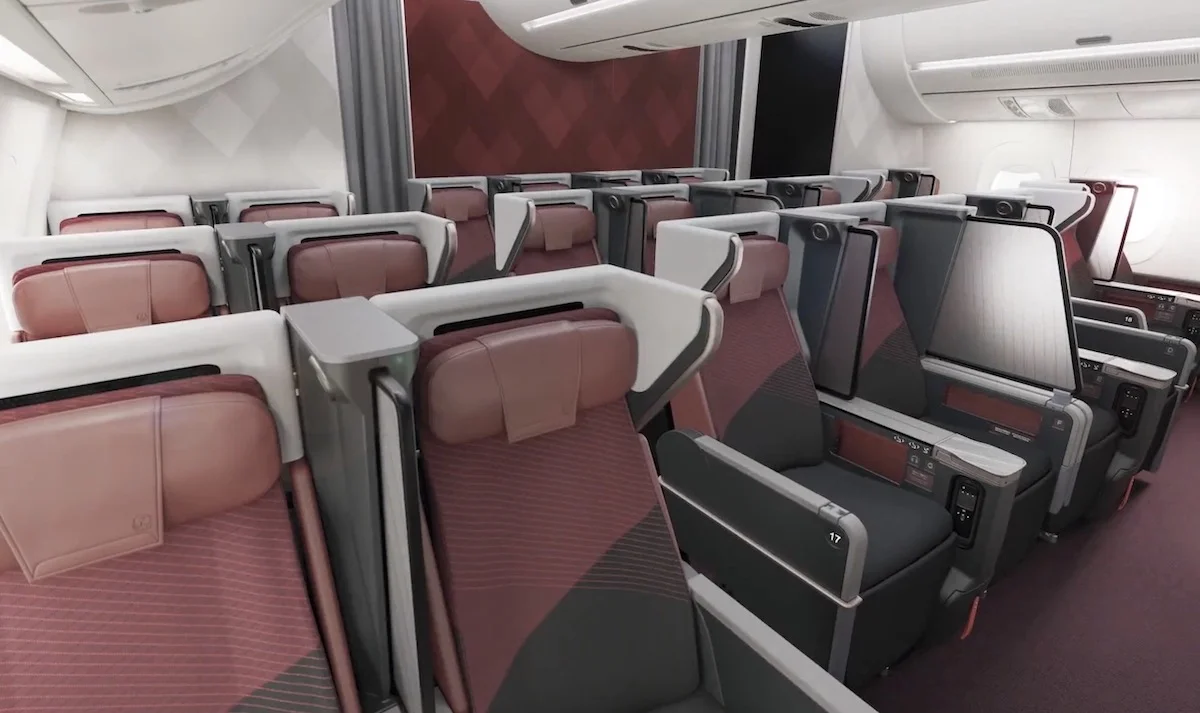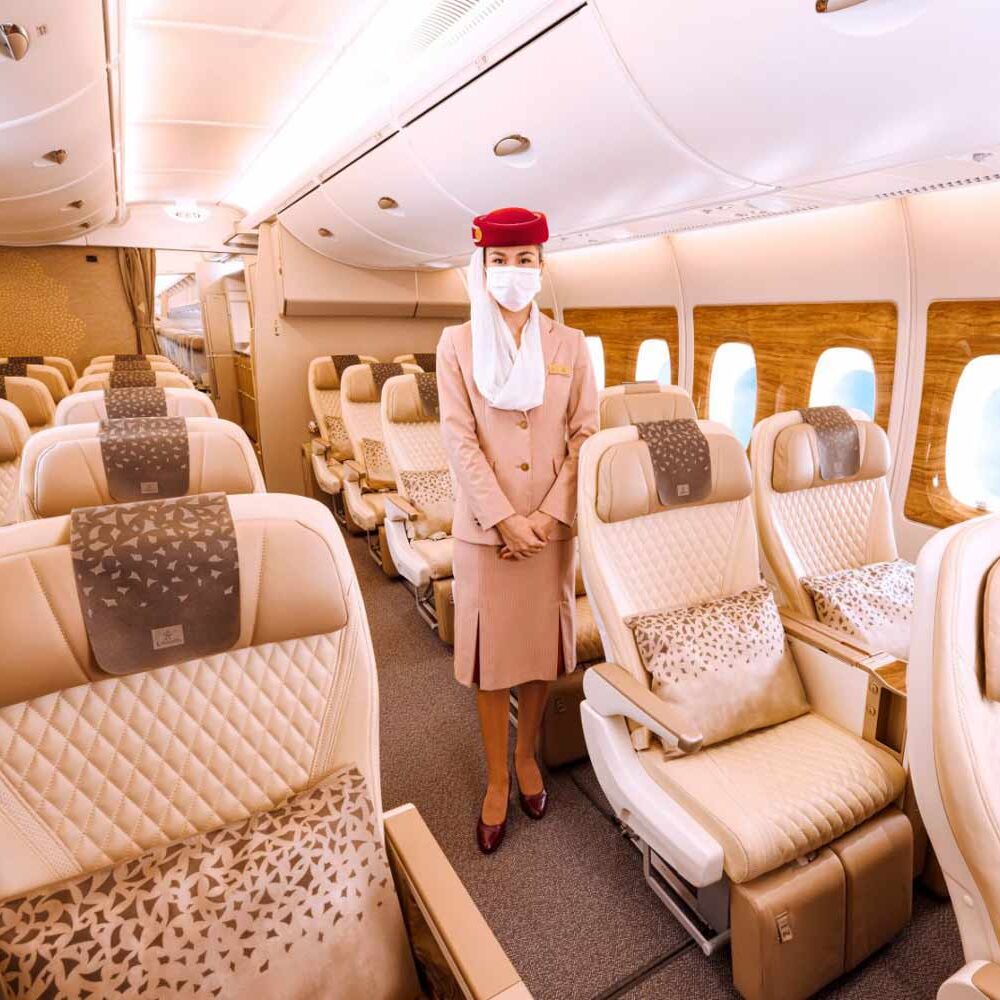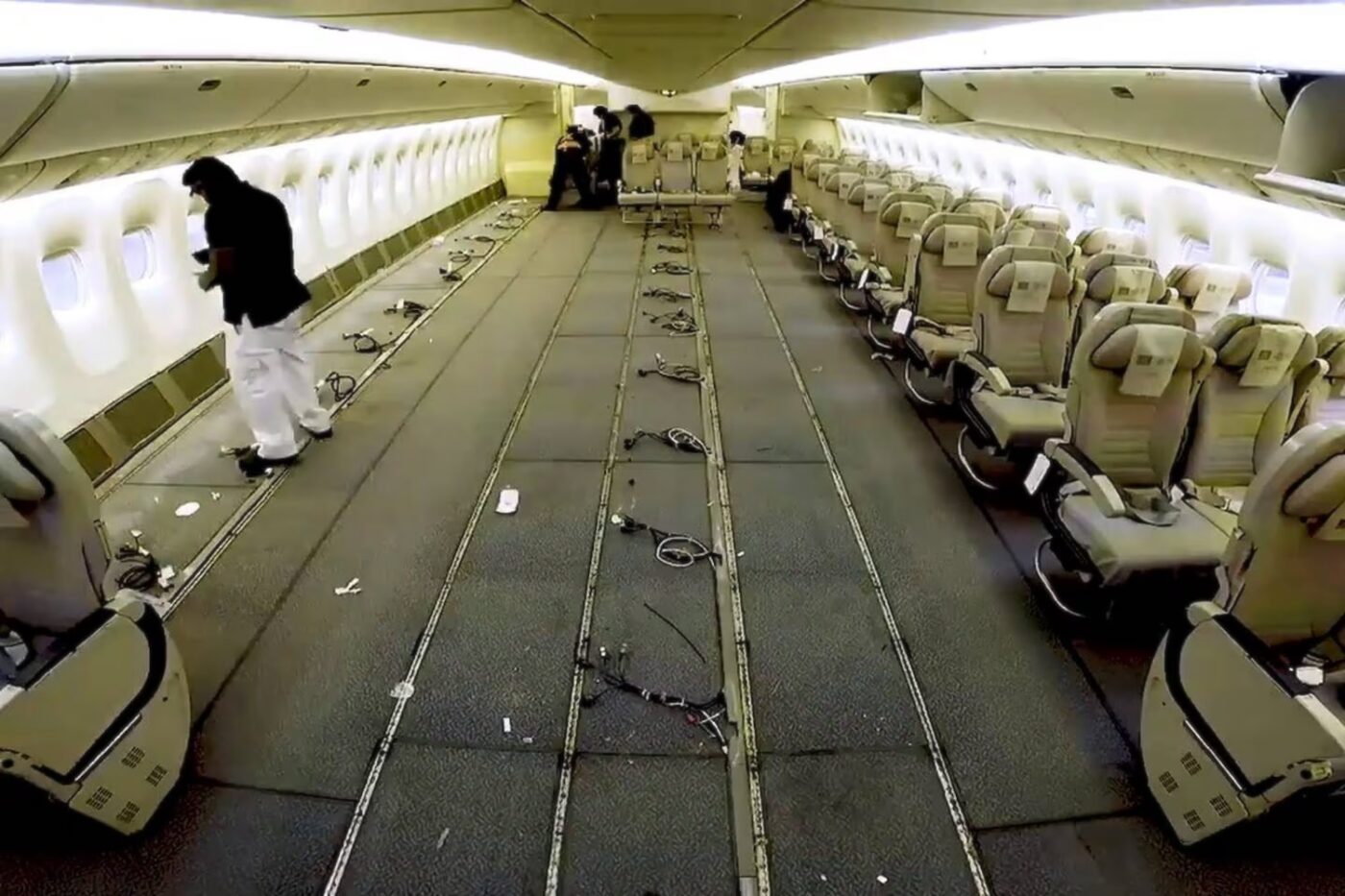American Airlines has become one of the first US carriers to pull the trigger on scrapping first-class seats as a wider trend takes hold whereby airlines deem the pointy end’s most premium offer to be ironically ‘pointless‘ in the face of changing economic circumstances and the rise of new ‘money making machines‘.
As reported by View From The Wing, AA is ending its Flagship First Class product in the coming months and years, switching its current fleet of A32IT planes into this new, much-less-luxurious configuration. It’s understood that the same configuration will be adopted by airfcrafts the carrier currently has on order, due to be delivered shortly.
WATCH: Beware: Viral ‘Poor Man’s First Class’ Travel Hack Is Literally Just Fraud
Gary Leff summarises the changes as follows:
“When new Boeing 787-9 planes are delivered with business class suites with doors, they will also retrofit their Boeing 777-300ER planes – eliminating international first class, and adding these new business class seats… They will drop first class from these A321T planes.
In fact they are going to modify the aircraft to a standard A321 Oasis domestic configuration with just recliner seats up front and coach in back. For premium cross country flights they’re expected to use new Airbus A321XLR planes which, once delivered, will have business class suites with doors as well.”
View From The Wing
Calling it “lamentable” that AA is scrapping their most premium product, Leff also points out that the biggest differences to the airline — and those felt by the biggest group of customers — will be back in plain old economy class, as the airline plans to remove seatback entertainment screens, reducing the number of seats with extra legroom, reducing the legroom that all economy seats have, and even removing a galley. Nothing better than being cramped and hungry, eh?
‘Pointless’ First Class
This story comes only a few months after Qatar Airways CEO Akbar Al Baker declared that the airline will no longer provide first-class seats for its planes in a strategically risky and divergent move that starkly contrasts with other airlines like Lufthansa, Qantas and Air France, who have all doubled down on their high-end offer in recent years.
While Carsten Spohr, CEO of Lufthansa, believes that more travellers are seeking a special treat, creating higher demand for the first-class experience — and, for the record, Lufthansa’s first-class cabins have never been fuller — Al Baker’s rationale stems from his belief that the investment in opulent first-class seating fails to yield sufficient returns, especially considering the immense perks offered in their business class.
Al Baker puts it this way:
“Why [wouldn’t] you invest in a subclass of an airplane that already gives you all the amenities that first class gives you? I don’t see the necessity.”
Akbar Al Baker, Qatar Airways CEO
For Al Baker, the future lies in business class, specifically the airline’s Q-suite product. His high-stakes vision has led the airline totally exclude first-class cabins from its next-generation Boeing 777X aircraft, which will become the largest in the airline’s fleet once all ten of its Airbus A380s (which still feature eight first-class seats) are eventually retired.
New ‘Money Making Machines’
However, business class is having its own usefulness questioned after data has emerged showing that premium economy might be the coolest new cabin in town. After the pandemic pushed the cost of business class to new highs, a growing number of one-time business-class travellers are now opting for premium economy, choosing comparable comfort at a fraction of the price.
A return flight to Europe in September with carriers like Qantas, Emirates, or Qatar now costs a jaw-dropping $15,000 AUD or thereabouts.
Conversely, premium economy seats are available at less than half that cost. Moreover, with an industry-wide average of 15cm more legroom and an additional 3.8cm of width over economy, passengers can bid farewell to cramped conditions while keeping their wallets that little bit fuller.

Premium economy offers a number of other benefits over economy, beyond the extra room to manoeuvre. While the recline angle of seats is, admittedly, not quite as generous as business class, it still allows for a more relaxed position during long-haul flights. Moreover, premium economy passengers enjoy a separate cabin, reduced chances of disturbances, and — depending on the specific aircraft’s configuration — may even have access to exclusive toilets.
But wait, there’s more! Additional perks include separate check-in, priority boarding between business and economy passengers, an enhanced food and drink menu, larger entertainment screens, and increased baggage allowances. Some carriers, like Japan Airlines (JAL), even grant premium economy passengers access to their business-class lounges in Japan and select overseas ports. The evidently huge allure of all this has led Harry Hohmeister — now chairman of Eurowings and formerly board member at Lufthansa — to give premium economy an enviable new moniker:
“A money-generating machine.”
Harry Hohmeister
Since he first made this comment way back in 2019, premium economy has continually proven to be a lucrative endeavour for airlines. If you stop to think about it, it shouldn’t really come as a surprise: premium economy allows airlines to maximize revenue without the need for all the additional luxuries and services you’d expect from business class.

In fact, a typical premium economy seat generates a massive 33% more revenue than a traditional economy seat and — more shockingly — 6% more than a business-class seat, all while occupying a near-identical amount of cabin space.
Perhaps this bumper profit margin also goes someway to explaining why airlines have been so keen to push their new ‘in-between class’ seating options — a handy moniker coined by The Sydney Morning Herald — potentially viewing them as a way to double-down on this model of maximising profits with as little spatial or financial investment as possible.
It seems there’s some disagreement in the industry about which cabins are set to make airlines the most money in coming months, but one thing they all seem to agree on is that radical change is needed onboard their planes in order to keep travel profitable and pleasurable… let’s see whose gamble pays off.
